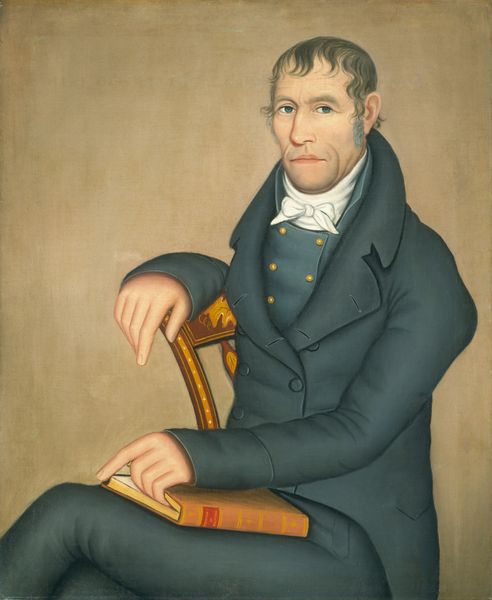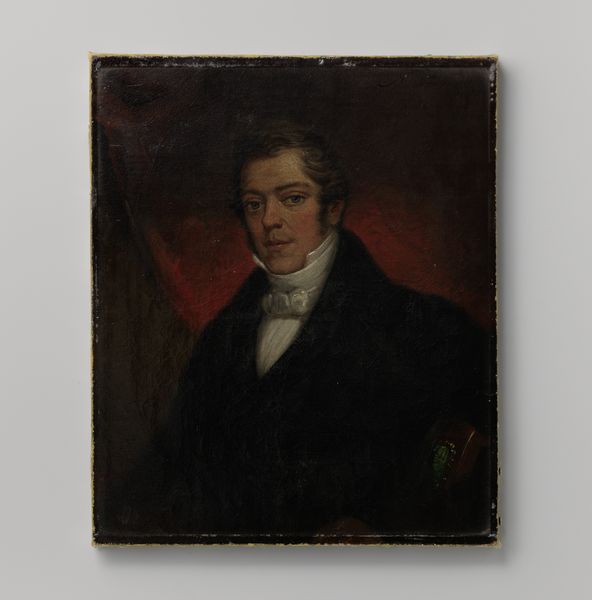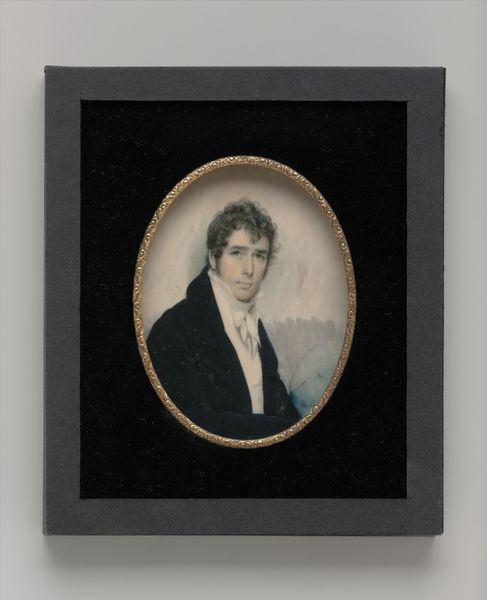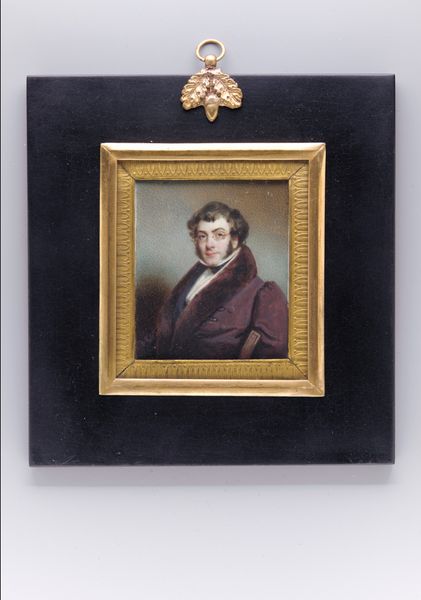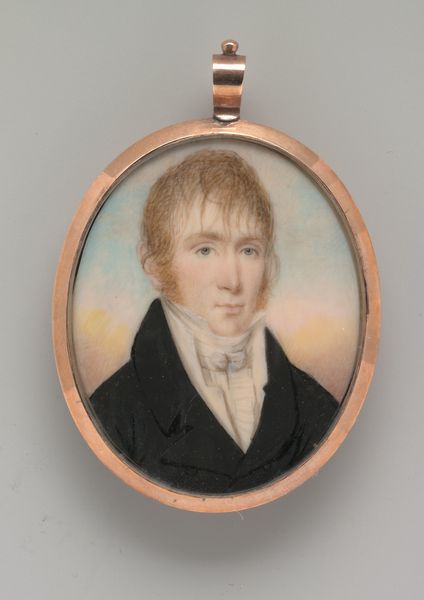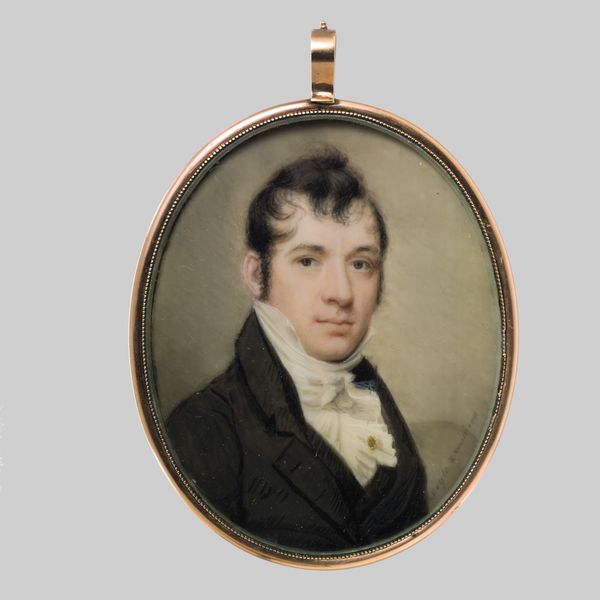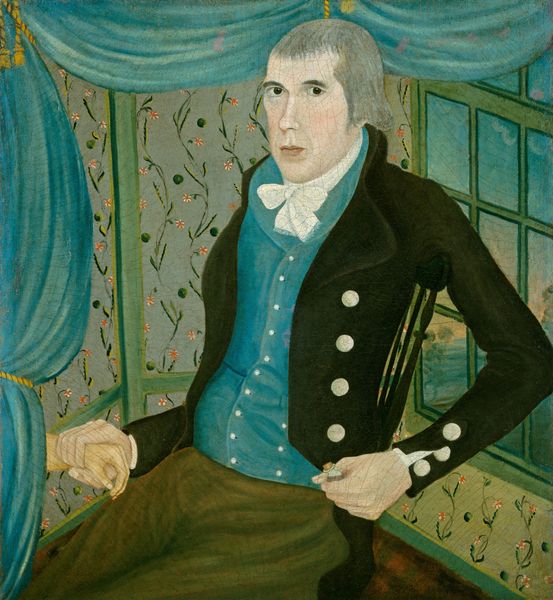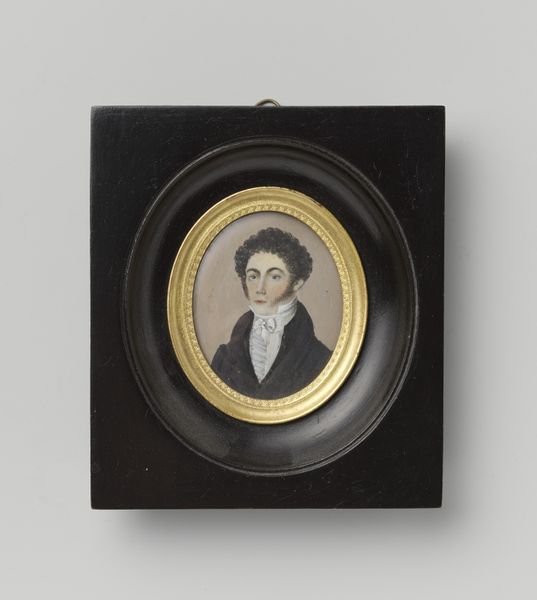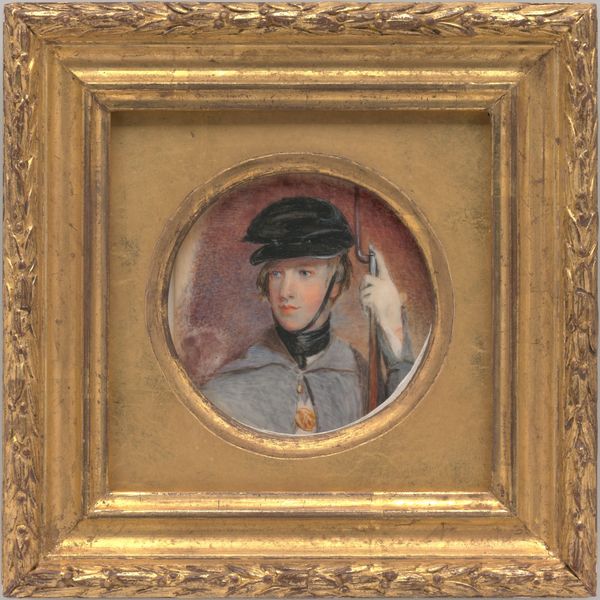
painting, oil-paint
#
portrait
#
neoclacissism
#
self-portrait
#
painting
#
oil-paint
Dimensions: 3 1/4 × 3 1/4 in. (8.3 × 8.3 cm)
Copyright: Public Domain
Curator: This is a “Self-Portrait” dating around 1795 to 1805. It’s an oil painting held in the collection of the Metropolitan Museum of Art. The artist remains anonymous. Editor: The most striking thing for me is the composition – it’s divided starkly in half. Light and shadow. It almost creates a sense of unease. Curator: I agree. It seems to represent more than just the artist's physical appearance. This was painted during the Neoclassical era, and portraiture held great social importance. Representing oneself allowed one to express individual status. Self-portraiture especially. Editor: Exactly. I find the lines here are incredibly crisp, cold even. And that cool palette – predominantly blues and grays – contribute to the austere mood. Even his skin tones read rather flat. Curator: During this era, self-portraits often mirrored classical ideals. This portrait can be interpreted as the artist making an assertion of individual skill and status, in this period defined by its break with aristocratic excess and push toward meritocracy. Editor: The size too contributes to this intimate feeling. These portrait miniatures were often highly prized keepsakes, demonstrating love, affection, or esteem. But its materiality, the physical layering of paint, is smooth, quite meticulous. Curator: It served to place the individual artist within a historical and political narrative that shaped artistic development. Here the artist captures the mood of that historical moment, seeking stability and order during a turbulent time in political and art history. Editor: A fittingly precise depiction reflecting both the person, their world, and perhaps an assertion of control through formal precision. Curator: A beautiful summation. Considering how portraiture, especially self-representation, continues to function, it's helpful to remember the historical implications of these earlier efforts to reflect one's self.
Comments
No comments
Be the first to comment and join the conversation on the ultimate creative platform.
